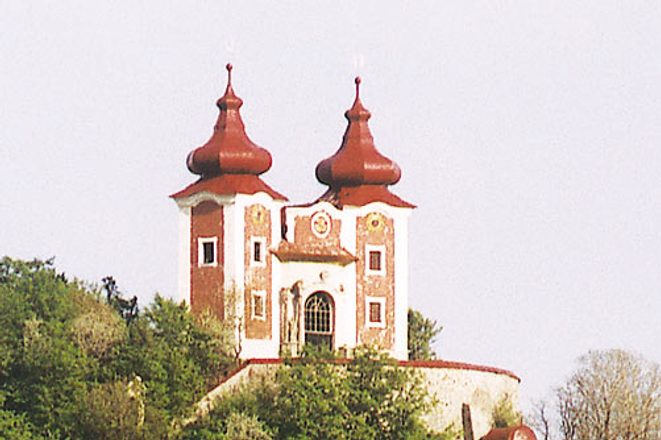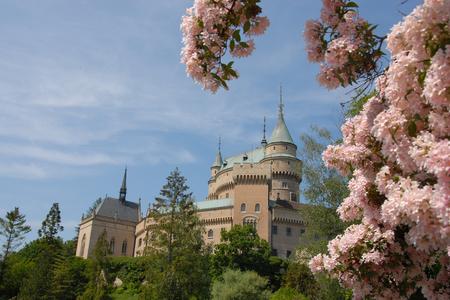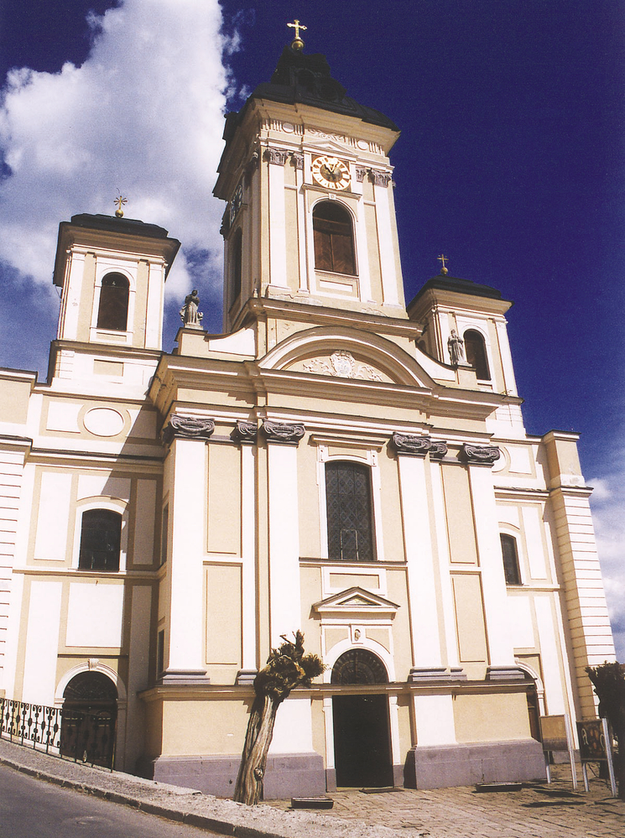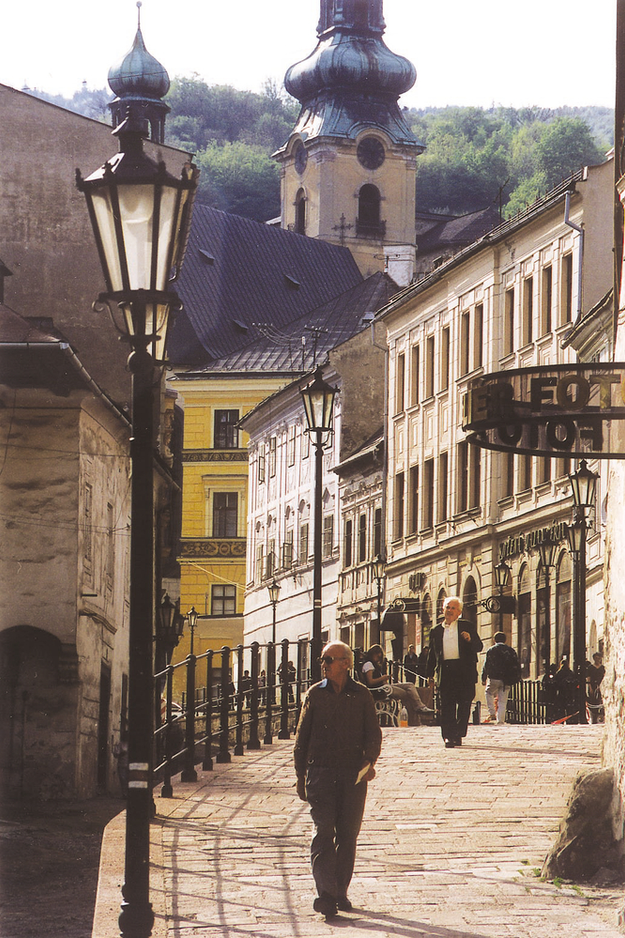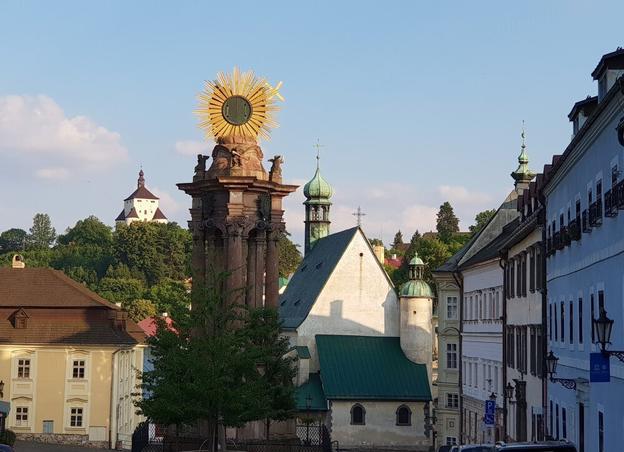This is an article from our archive of travel guides, Spectacular Slovakia. We decided to publish it for our readers, making only necessary adjustments. Some of the writer’s observations from 2002 have changed, but much still holds true. For up-to-date information and feature stories, take a look at the latest edition of our Slovakia Travel Guide.
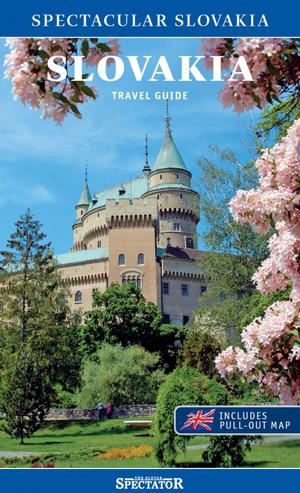
Writing about Banská Štiavnica is a distressing task. I have begun this article at least ten times, and it always begins: Beautiful Banská Štiavnica is such a beautiful town that with each visit I end up weeping in the beautiful streets, overcome by the incredible beauty and majesty of this beautiful town located in these beautiful forested hills in this beautiful country of beautiful Slovakia. Or something like that.
The truth is, it’s tough to describe this former mining town without being mawkish. The problem is that this place is so... beautiful! How to describe a singular beauty like Banská Štiavnica? I’m not sure. But I promise this much: I will not use the word ‘beautiful’ again in this article (and never mind that I’ve already used it 11 times).
Old town
Let’s begin with the Old Town. The fact that it is on a hill plays a key role. It makes it, somehow, better. Imagine Bratislava’s Main Square, with its fountains, statues and stunning buildings. Now put it on a hill with a 1-in-6 gradient. It’s still... that word... but it’s also different.
Štiavnica was erected on this steep slope because these hills - the Glanzenberg and Paradayz - were once rich with gold and silver. So locals hoping to profit set up camp here in the 11th century. Soon enough - Eureka! - the town flourished. King Béla IV of Hungary made it a township in 1238; the world’s first technical university devoted to Chemistry, Physics and Mineralogy was founded here in 1762; and Štiavnica was the third largest city in the Hungarian Kingdom by 1783, behind only Bratislava and Debrecen.
Although mining for gold and silver ceased in the early 20th century, the tradition can still be observed at the Outdoor Mining Museum, about 20 minutes on foot from the centre. To get there, follow the road to the village Štiavnické Bane. On the way back you’ll notice the klopačka tower, where mine overlords used to announce the new day by pounding a mallet on a resonant wooden board. On the bottom floor of the klopačka today is a wonderfully oddball teahouse. (Try the ‘white monkey’.)
Calvary and churches
Banská Štiavnica also has a fine selection of churches. The Church of the Assumption of the Virgin Mary, on Akademická ulica, is the highlight. If the doors are open, step inside and check out the wooden organ balcony. Also worth seeing are the St. Catherine and Lutheran churches near the top of town.
The town’s most remarkable ecclesiastical buildings, however, are found on the Calvary Hill. Cities around Slovakia pay tribute to the site where Christ was crucified, but none do it better than Štiavnica with its leafy trail leading past 14 Stations of the Cross up to an 18th-century triple-domed cathedral at the top of Calvary (or Scharffenberg) Hill. This is the scene found on many a local postcard, and one of the main reasons why Unesco designated the town a World Heritage Site in 1993.
Green part of the town
Besides mining and religion, Banská Štiavnica is also known for its greenery. On Akademická ulica there is a botanical garden, with species planted from 1838 to 1861. The garden is home to 250 non-native plant species, including Californian Giant Sequoias and Japanese Crytomeria.
Last year the town was a finalist at the Nations in Bloom international environmental competition - also known as the ‘Green Oscars’ - held in Shenzhen, China. Nations in Bloom awards communities around the world for exemplary environmental practices. Štiavnica was honoured for excellence in enhancement of landscape, heritage management, use of environmentally-sensitive practices, community involvement and planning for the future.
Main square
The main tourist site is at the top of town, namely Námestie Svätej Trojice (Holy Trinity Square) where visitors find a collection of burgher houses, the town gallery, the Slovak Mining Museum’s mineralogical exhibition, and, rising above all these, the Old Castle.
Further up the square is a white and grey renaissance-baroque building from the 17th century. It looks great from the outside, but don’t try entering. In such an attractive city, this is as ugly as it gets: Alexander Rezeš, the former head of the VSŽ steelworks in Košice, received permission in 1998 to re-timber the roof. He then - without permission - had the entire historical interior gutted (including the original renaissance arches and ceiling) to make room for a swimming pool and sauna to be used only by himself and his other privatisation-rich buddies. Like any country, Slovakia has its bad guys. Rezeš stands out with the worst of them.
Recommended hike
Walk past the Rezeš fiasco and you hit the hiking trails. There are many around Banská Štiavnica, and they are all full of incredible views and engaging historical sites.
Head towards the Červená studňa pass 20 minutes above town. Along the way you’ll pass a gorgeous aquamarine reservoir. At the pass, take the red trail to Štiavnické Bane. The way follows a ridge, meaning it goes up and down several peaks. Then head into the village and follow the blue trail to the Sitno mountain peak, which at 1,009 metres is the tallest in the region. The peak is characterised by a natural wall of andezite rock that looks like a castle ruin on approach. Sitno sits in a nature reserve area; on my hike, in early April, I saw no less than 15 deer, and a snake.
Our Spectacular Slovakia travel guides are available in our online shop.
From Sitno, you can either hike back to Štiavnica (two hours), or hike into Antol (also two hours), where a large hunting museum awaits. Frequent buses head back into town from here.
What else to say? A lot. That’s 936 words on Banská Štiavnica and its environs which, really, doesn’t even begin to tell the whole story. You could spend a whole week here and not run out of things to do or see. You could settle down here and be quite satisfied, thrilled even. Why?
Simple: Because Banská Štiavnica is, (now, where’s my thesaurus?): lovely, exquisite, elegant, heavenly, divine, angelic, picturesque, charming, and - yes, even the archaic - comely.
Spectacular Slovakia travel guides
A helping hand in the heart of Europe thanks to the Slovakia travel guide with more than 1,000 photos and hundred of tourist spots.
Detailed travel guide to the Tatras introduces you to the whole region around the Tatra mountains, including attractions on the Polish side.
Lost in Bratislava? Impossible with our City Guide!
See some selected travel articles, podcasts, traveller's needs as well as other guides dedicated to Nitra, Trenčín Region, Trnava Region and Žilina Region.

